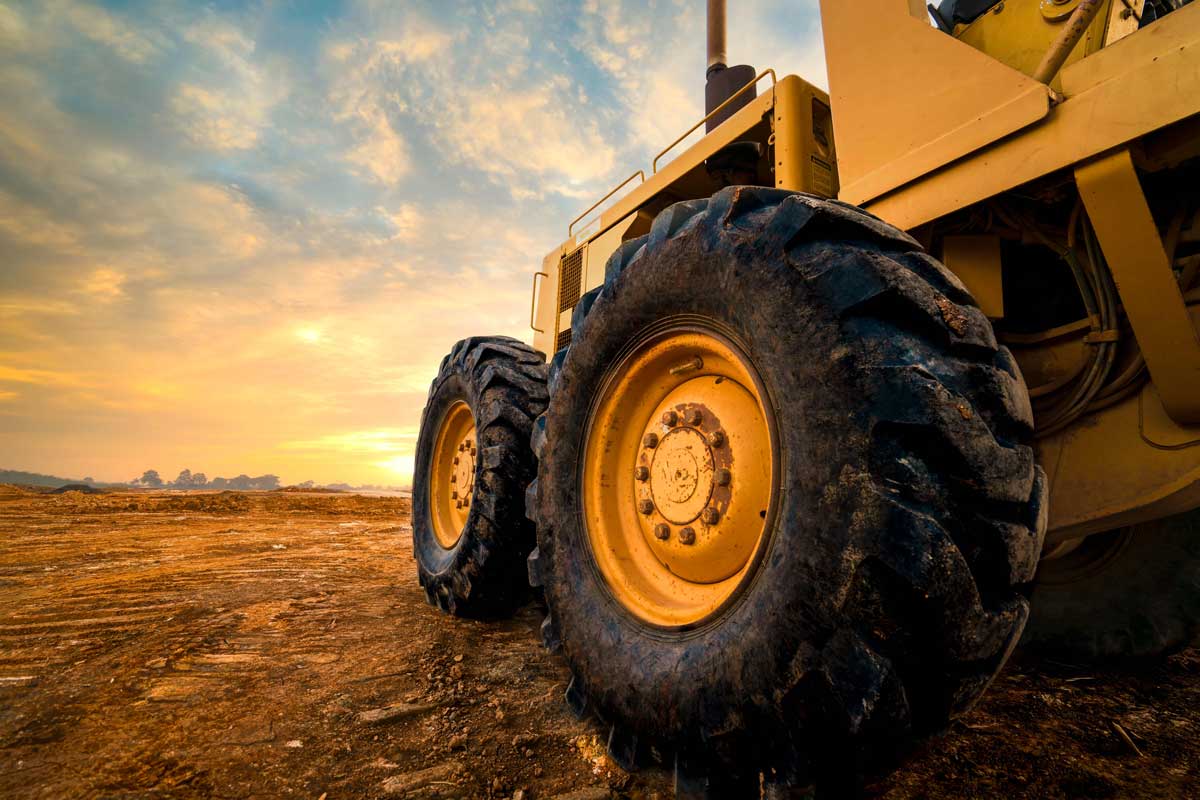The off-the-road (OTR) tyre market is remarkably healthy after two years of possibly the toughestever logistics phase and a volatile economy. The Indian tyre industry proved to be resilient against the COVID-19 pandemic, supported by robust growth in exports and improved tyre performance by Indian manufacturers. Further, the Government's restrictions on tyre imports, particularly from China, resulted in import substitution during FY21 and FY22. While replacement tyre demand, the backbone of the industry, continued to perform steadily during FY21 and FY22, it has slowed down in the current fiscal year.
The tyre industry recorded a 14 per cent volume growth in FY22 year on year and is expected to end the year with a 4-5 per cent growth in volumes for FY23. The tyre industry has been recording growth across the past 10 quarters, primarily led by a combination of growth in volume and realisations. Revenue growth in FY23 so far is more driven by realisations on account of steep cost pressures.
The Indian landscape
Going back in time, Indian tyre manufacturers were generally focused on highway tyres for mass consumption. But the late 1980s brought a change in this mindset and with the passage of time, there has been a shift towards OTR tyres. Today, India has emerged as one of the leading manufacturing and consumption hubs of OTR tyres, primarily in the agriculture and mining segments, followed by construction equipment. To meet the growing demand, manufacturers are complementing production capacities with rigorous R&D and innovation, a telling example of which is the gradual shift to radialisation.
The market is likely to grow at a CAGR of 9.04 per cent in volume terms. This growth is backed by increased spending in the construction and mining sectors as well as in agriculture. Major demand-driving vehicle categories are tractors and earthmoving equipment such as loaders and excavators. The mining andconstruction segments contribute to more than half of OTR tyre sales in the country. Agriculture is the biggest segment for OTR tyres owing to increased tractor penetration in rural India.
Quick bytes
There has been increasing demand for OTR tyresowing to growth in agriculture and construction activities.
Tractors and earthmoving construction equipment are the key demand-driving products.
Indian players are expanding their raw material production to support rising demand for OTR tyres.
Driving force
The driving force behind constant innovation is the rate at which OEMs are technologically upgrading their offerings for mining and infrastructure sectors. Whether it is backhoe loaders, forklifts, tipper trucks, dumpers, cranes or excavators, all equipment goes through frequent technological upgradation these days, with respect to diversity of applications and hauling loads. And as OEMs are the major consumers of OTR tyres, it is imperative that tyre manufacturers periodically tailor their products in accordance with client requirements.
According to Rajiv Poddar, Joint Managing Director, Balkrishna Industries Ltd(BKT), “India is one of the largest markets for OTR tyres in the world, forecasted to reach 15 million units by the end of 2023 – all because of growing construction, mining and agricultural activities, coupled with increasing sales of OTR vehicles. Infrastructure growth like road construction and connecting seaports will create rapid demand. Coal mining has been the major activity in the country and the privatisation of coal mining has given a further push to mining activities. Similarly, demand for iron ore and other metal mining like zinc is expected to be a boom in this sector. With a vibrant mining segment, India will require technologically advanced tyres to support the latest mining trucks and loaders. Growing mechanisation in the agricultural industry further increases demand for agriculture tyres for vehicles such as tractors, mowers and dozers.”
Innovation is the key
OTR tyres of the modern age comply with international standards and score high on abrasion resistance, fuel economy and energy-efficiency. Undoubtedly, innovation has emerged as the key to success. Today, the domestic OTR tyre market is quite competitive and highly concentrated,with top notch players and there has been a noticeable change in technological upgradation.
“Maximising productivity is one of the purposes of innovation,” says Poddar.“We look at how OTR tyre innovations have been changing profiles to wider tyres and larger rim diameters. One can get five more inches of width, approximately of the same OD, and a shorter sidewall that gives better torque delivery, better braking and more stability. All this contributes to greater productivity for the operator. Another critical factor is the tyre compound. The need for higher load-carrying capacity and higher speeds is pushing innovations like stronger bonding materials within the casing to handle extra stress, and we have seen great advances in compounds that protect sidewalls in tough applications like underground mining.At BKT, we pay great attention to developing products as a response to each territory’s most specific needs. We work with OEMs for their requirements, which undergo tremendous research like applications, underfoot conditions, the requirement of traction, etc, based on which we provide solutions.”
Further, precipitated silica has become a key filler for the tyre industry owing to its properties and performance. It improves physical and dynamic properties such as tensile strength, abrasion resistance, tear resistance and wet grip. Silica is perceived as a material that can address the environment challenges associated with tyre production and replace carbon black in tyres. “Brisil’s silica is a more environment-friendly material as it requires less energy compared to conventional silica production methods and uses a waste as base material for silica,” says Tanmay Pandya, Director, Brisil Technologies. “Brisil produces highly dispersible silica and conventional silica for tyres application.”
Emerging trends
Technology-embedded tyres were unheard of until a few years ago. Today, sensor-equipped tyres are a frequent feature. Road and highway construction and operation are at an all-time high. Roads and highways were operating normally despite the lockdown or partial opening of the lockdown, and this is expected to continue. The mining industry has gained more momentum since the coal mining industry was opened to commercial companies. All these factors are positively contributing to the expansion of OTR tyres in India.
Every end-user has its own set of demands as far as tyres are concerned. For instance, Schwing Stetter demands tyres with rims compatible with its equipment,such as self-loading mixers, wheel loaders, motor graders, truck mixers and concrete pumps. “We strongly demand tubeless tyres designed for use on tough terrain,” shares Sakthikumar VG, Managing Director, Schwing Stetter (India).“Althoughclients are given advice on tyre care, not all customers heed the advice. Therefore, maintenance-free tyres would guarantee that users receive the intended results even if they don't adhere to the tyre standards.”
“Worldwide, the radialisation of OTR tyres has taken place,” says Poddar. “Globally, the mining sectoris witnessing high demand for ‘all-steel radial’ tyres, which can withstand the severity of extreme operational conditions in both surface and underground mining.However, in India, radialisation is still at a nascent stage. The Indian OTR tyre market is largely driven by demand for bias tyres and the percentage of radial tires usage is limited to 20-25 per cent. The introduction of new mining equipment by OEMs like Caterpillar and Komatsu is creating demand for all-steel radial tyres in the mining segment and BKT is championing this trend by extensively supplying to international markets.”
Market share
The India OTR tyre market is fairly distributed between OEM and replacement demand. Replacement demand is analysed by looking at the current fleet of vehicles, age of vehicle and weighted replacement ratio based on average usage.The market is largely driven by demand for bias tyres and a small percentage of radial tyres but it is witnessing a trend of increased usage for radial tyres in the construction and mining sectors. The India OTR tyre market is largely driven by demand for




















